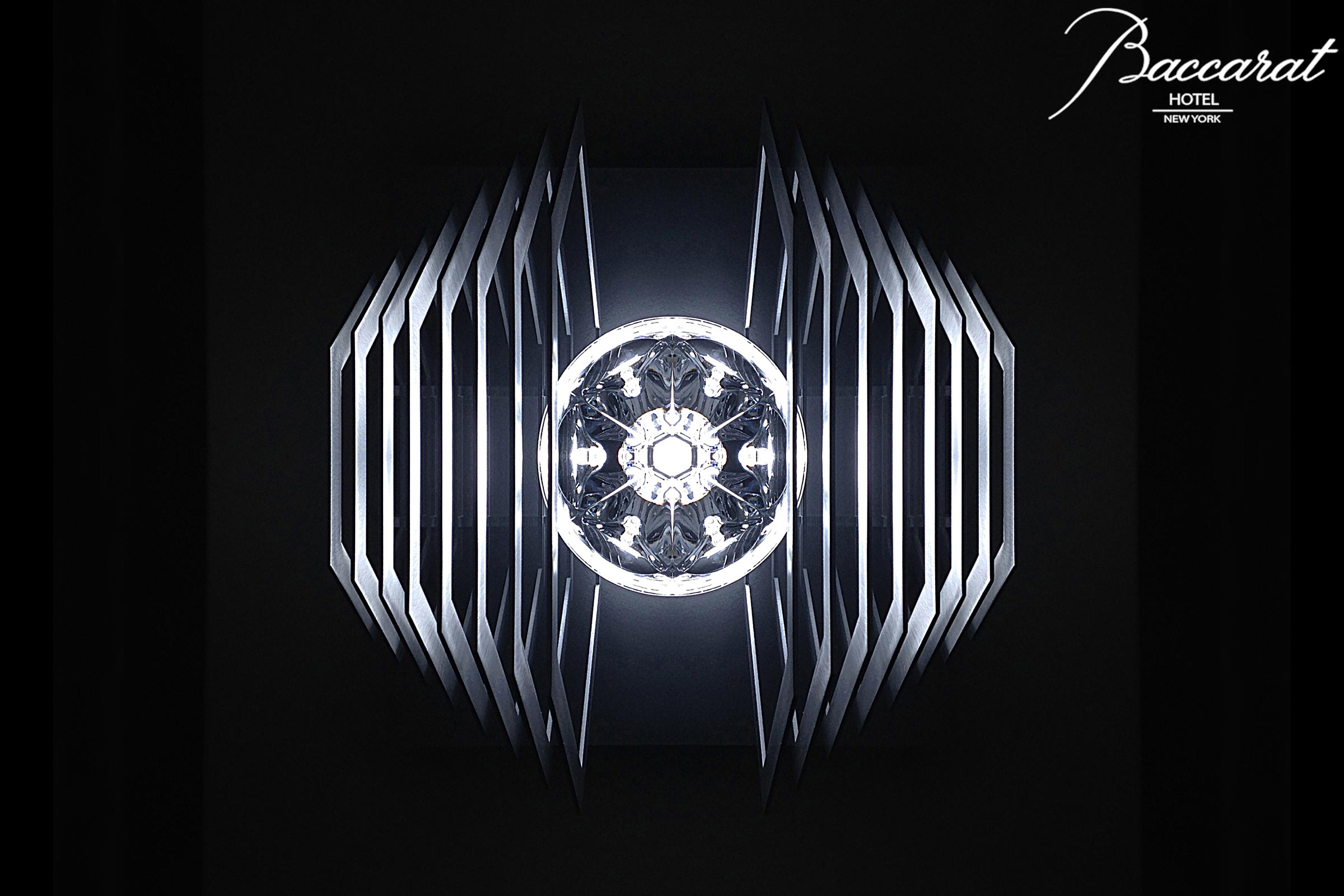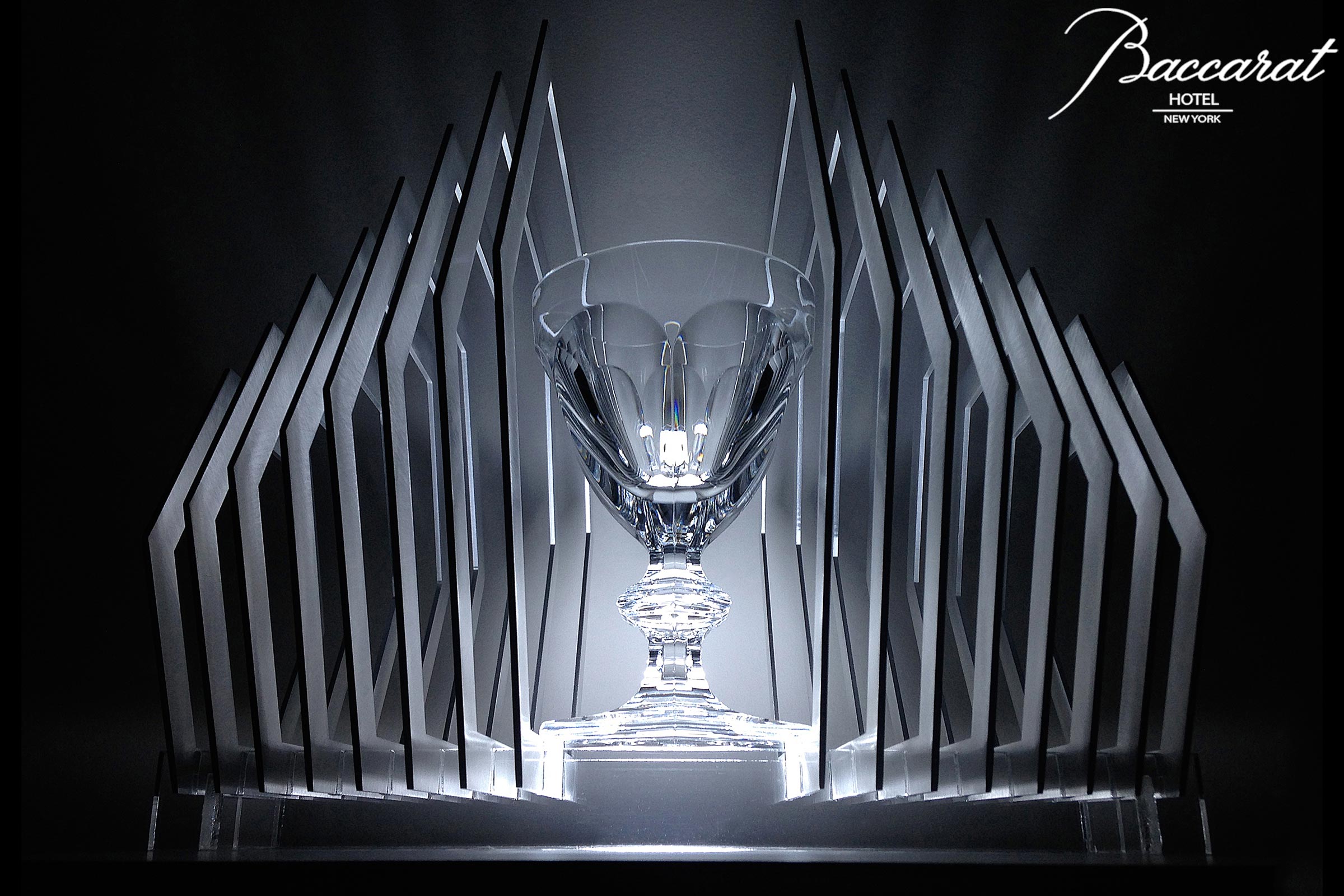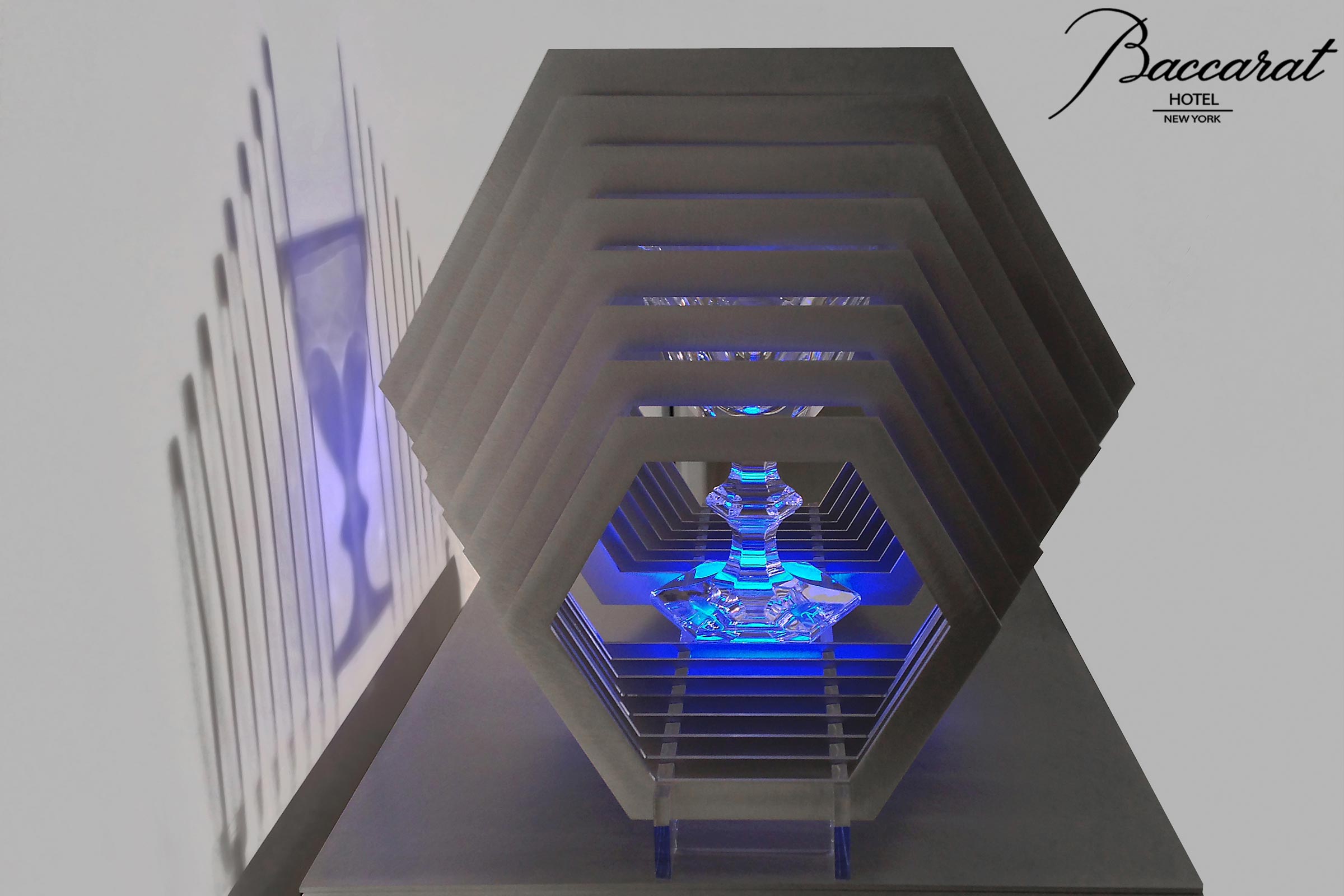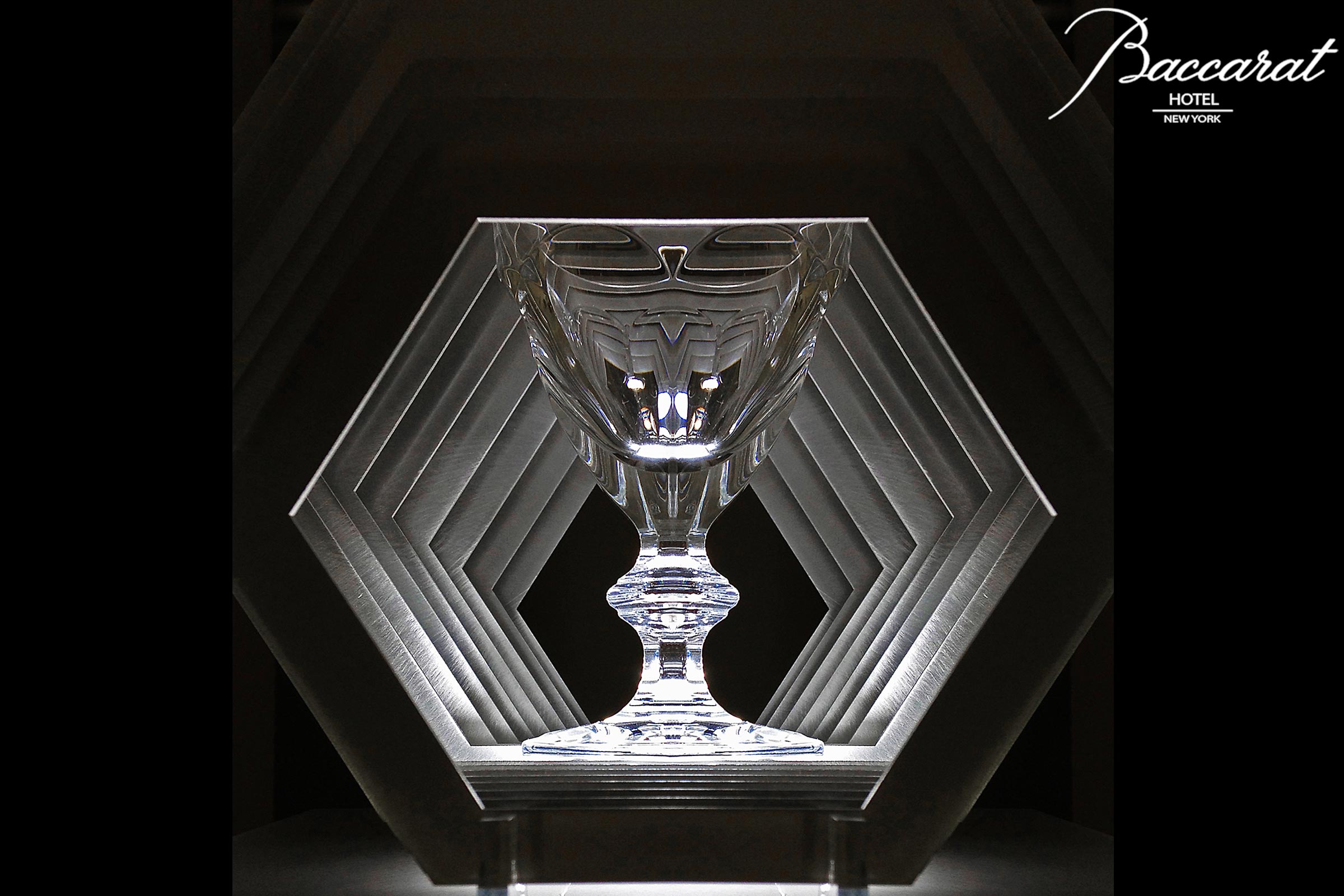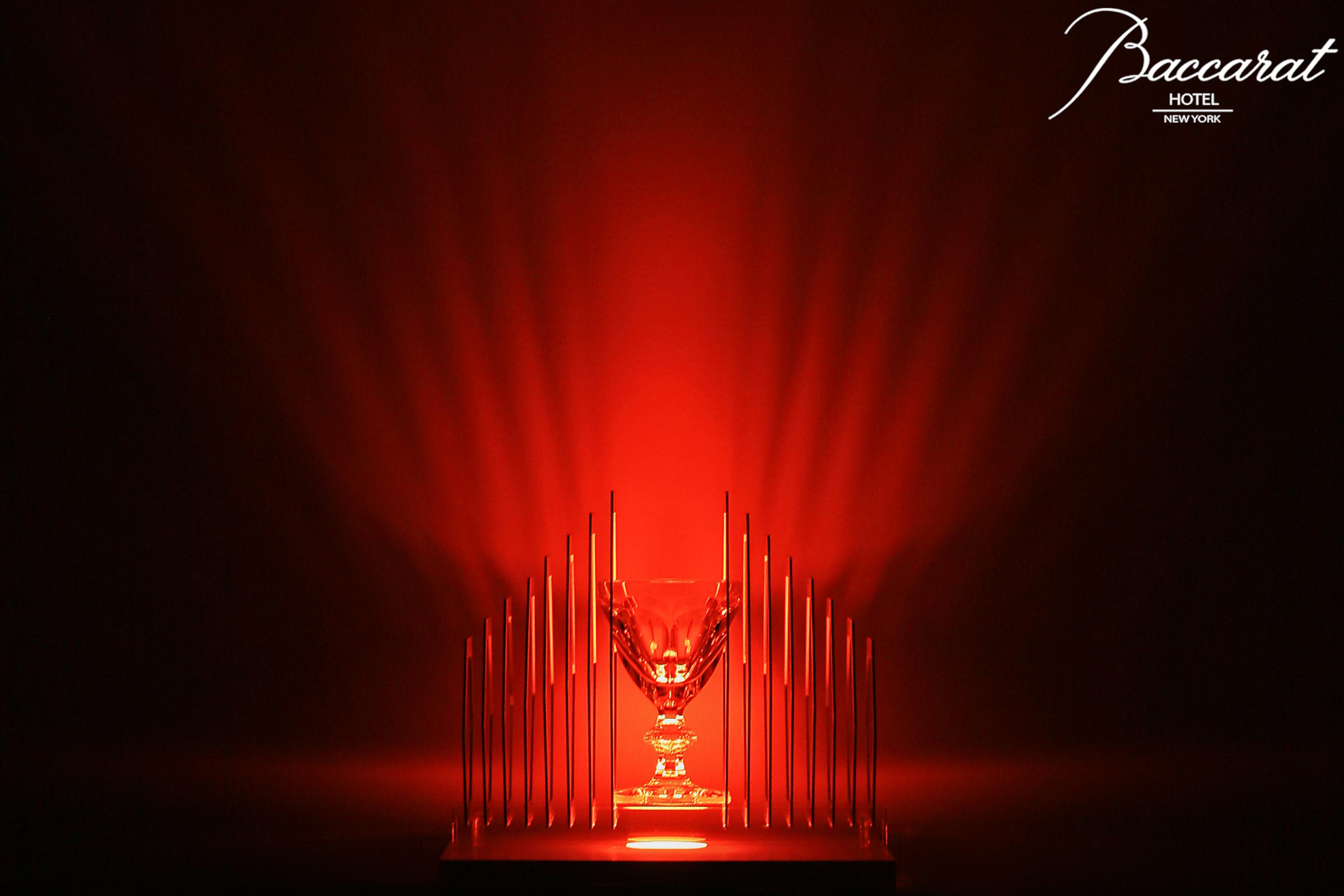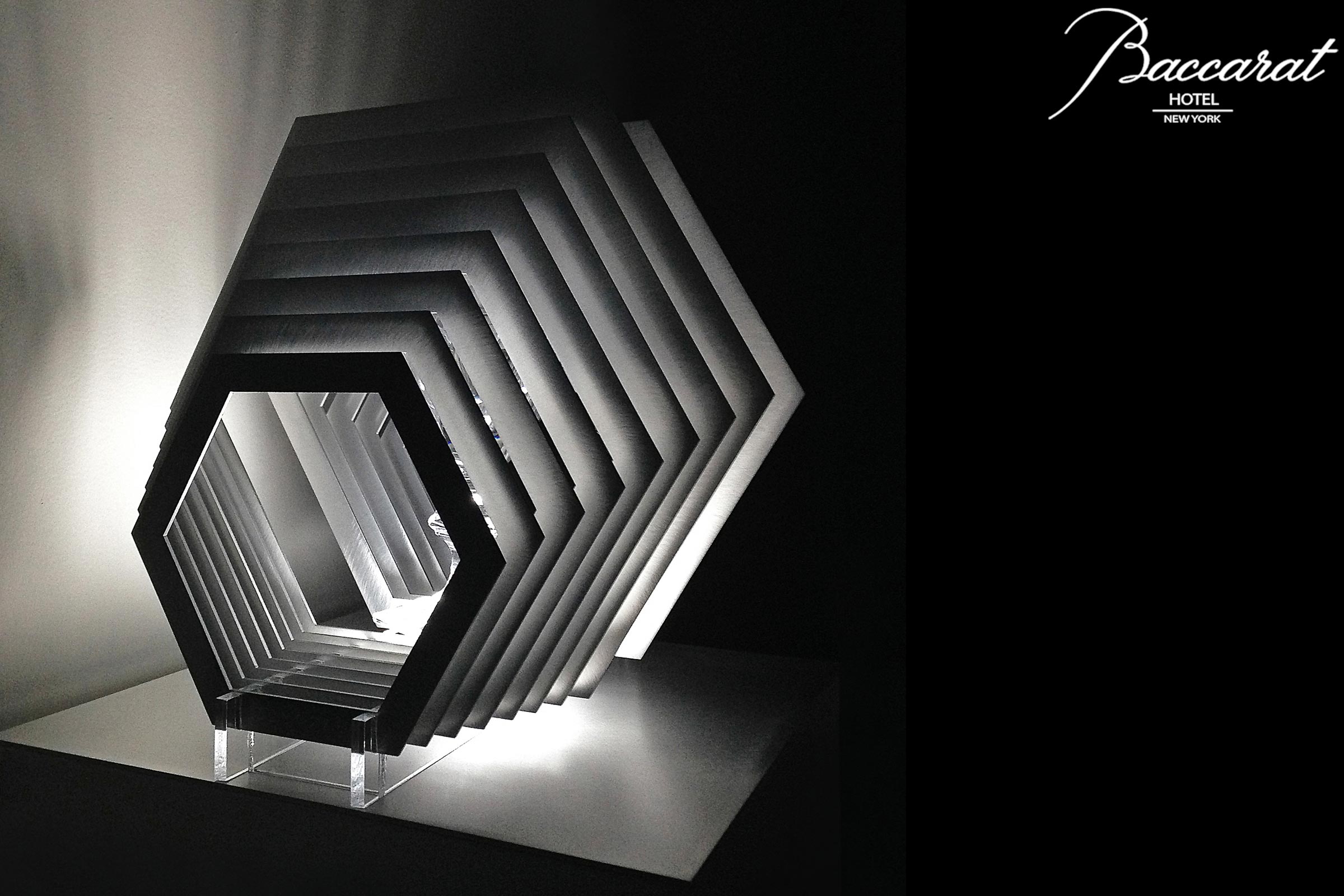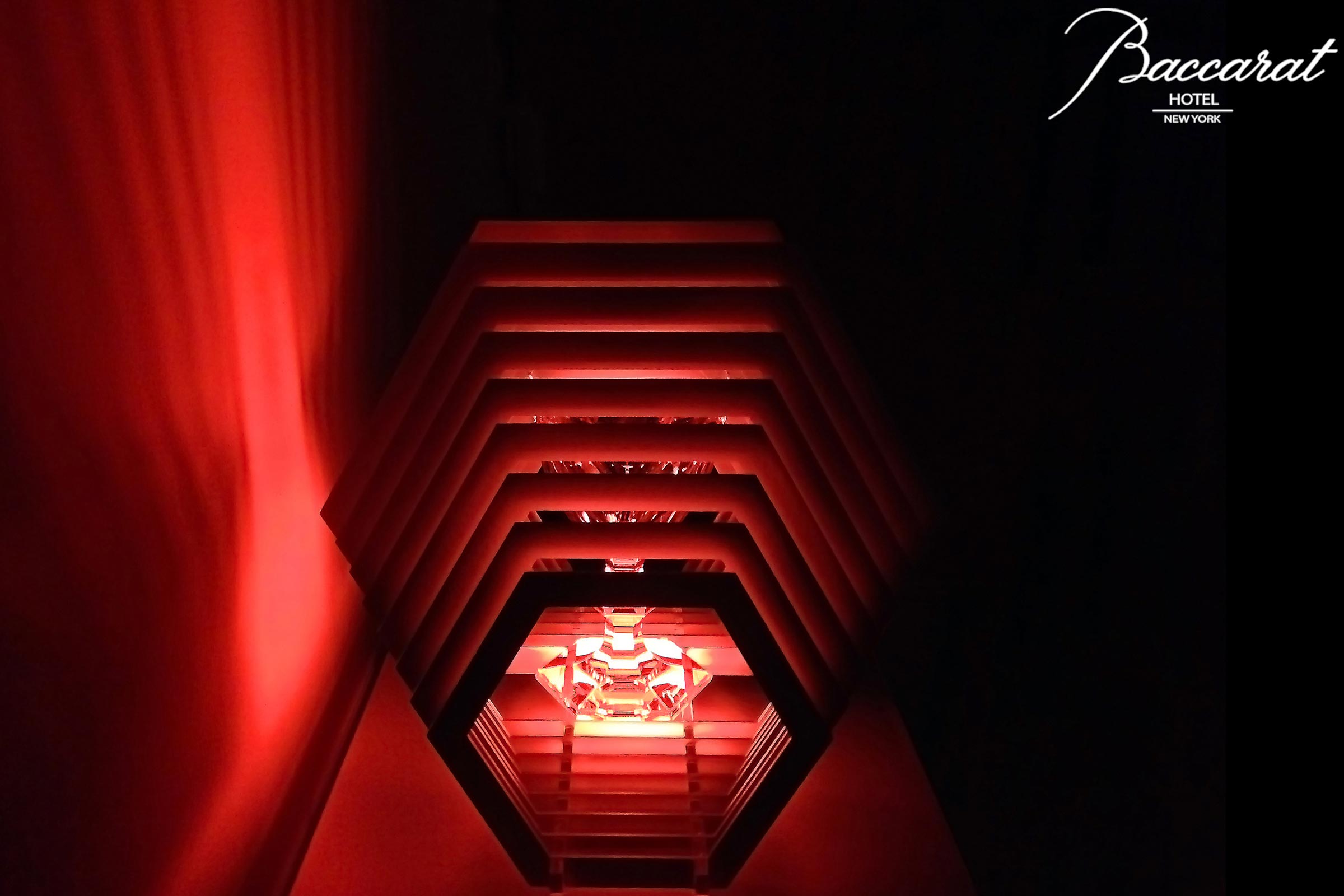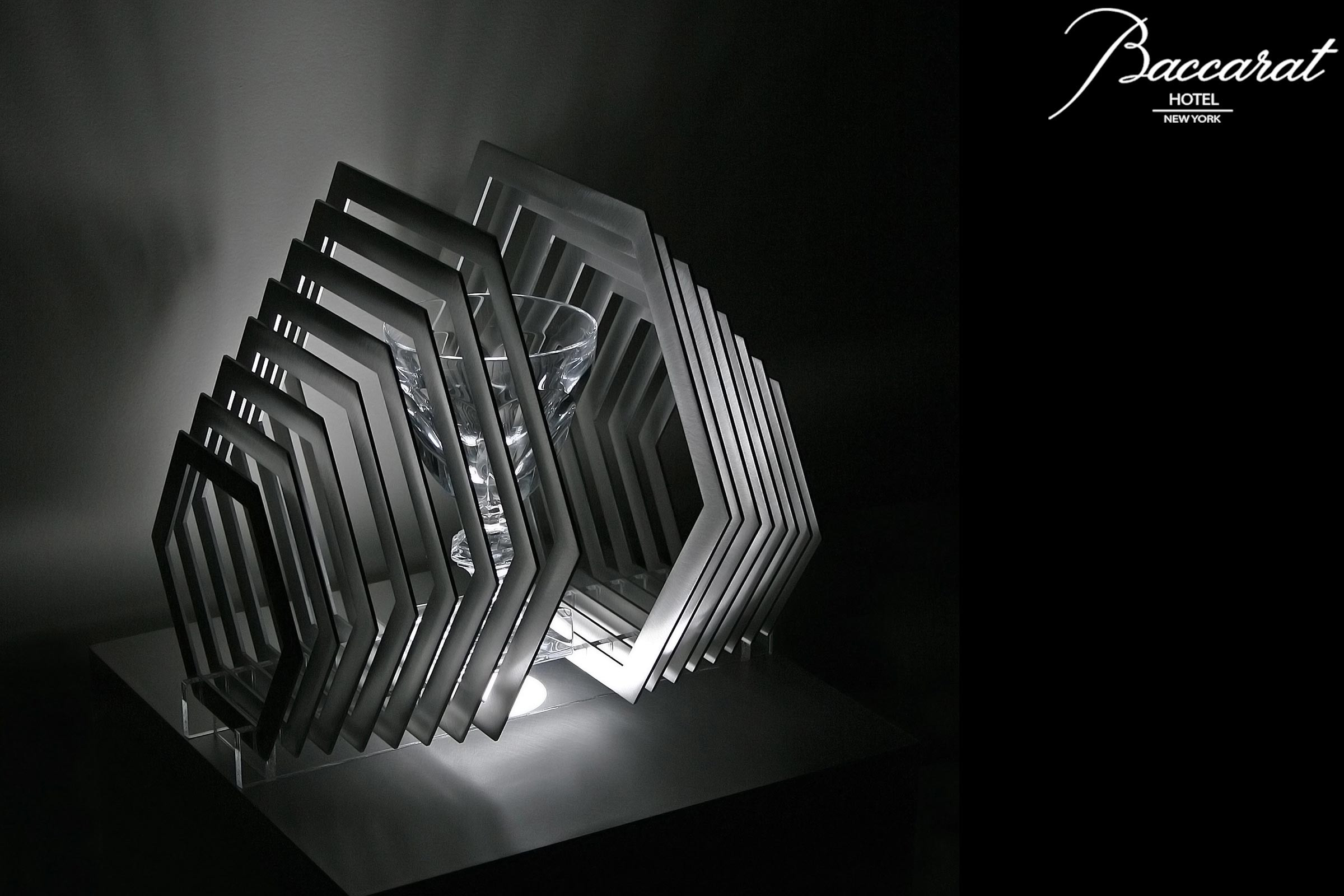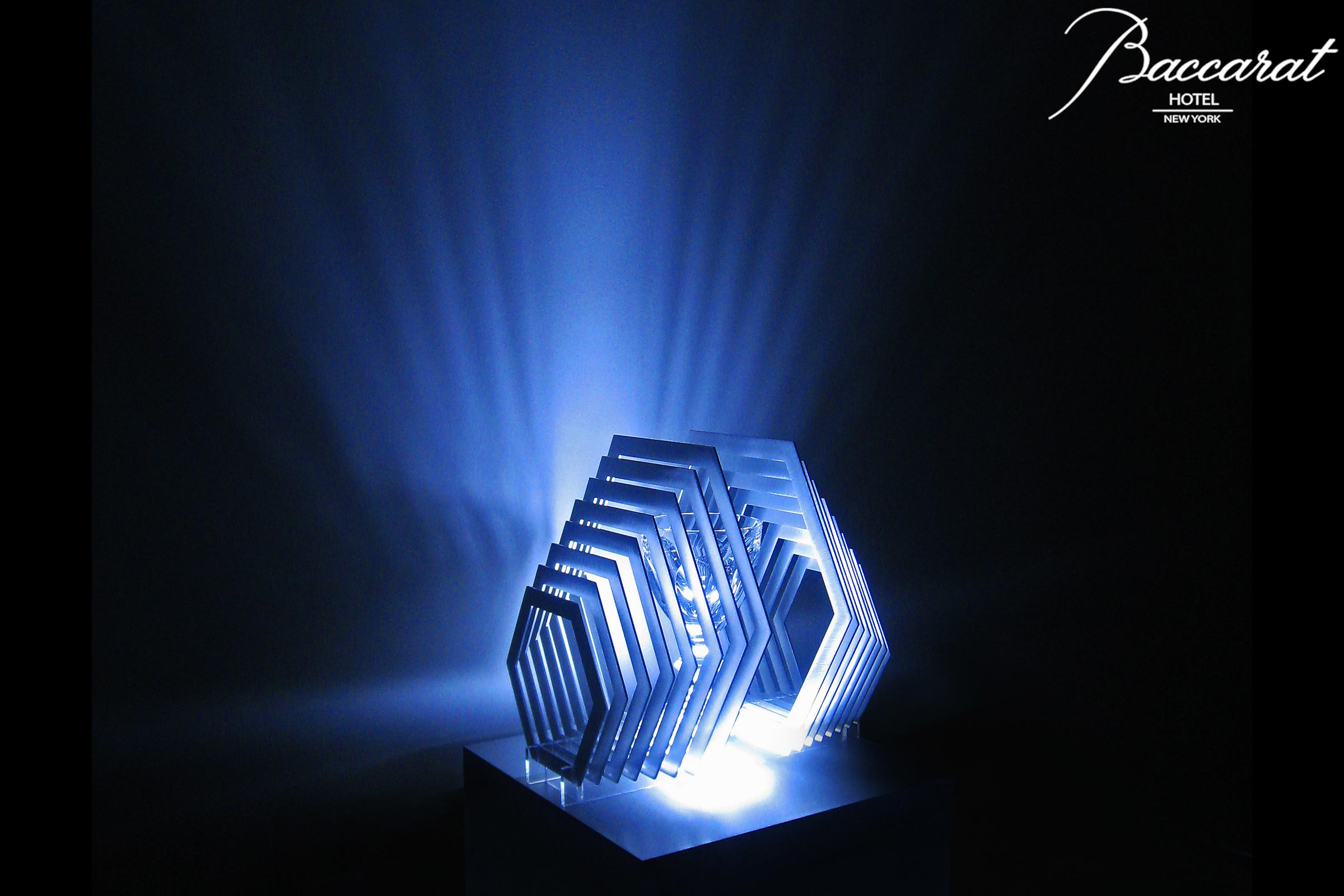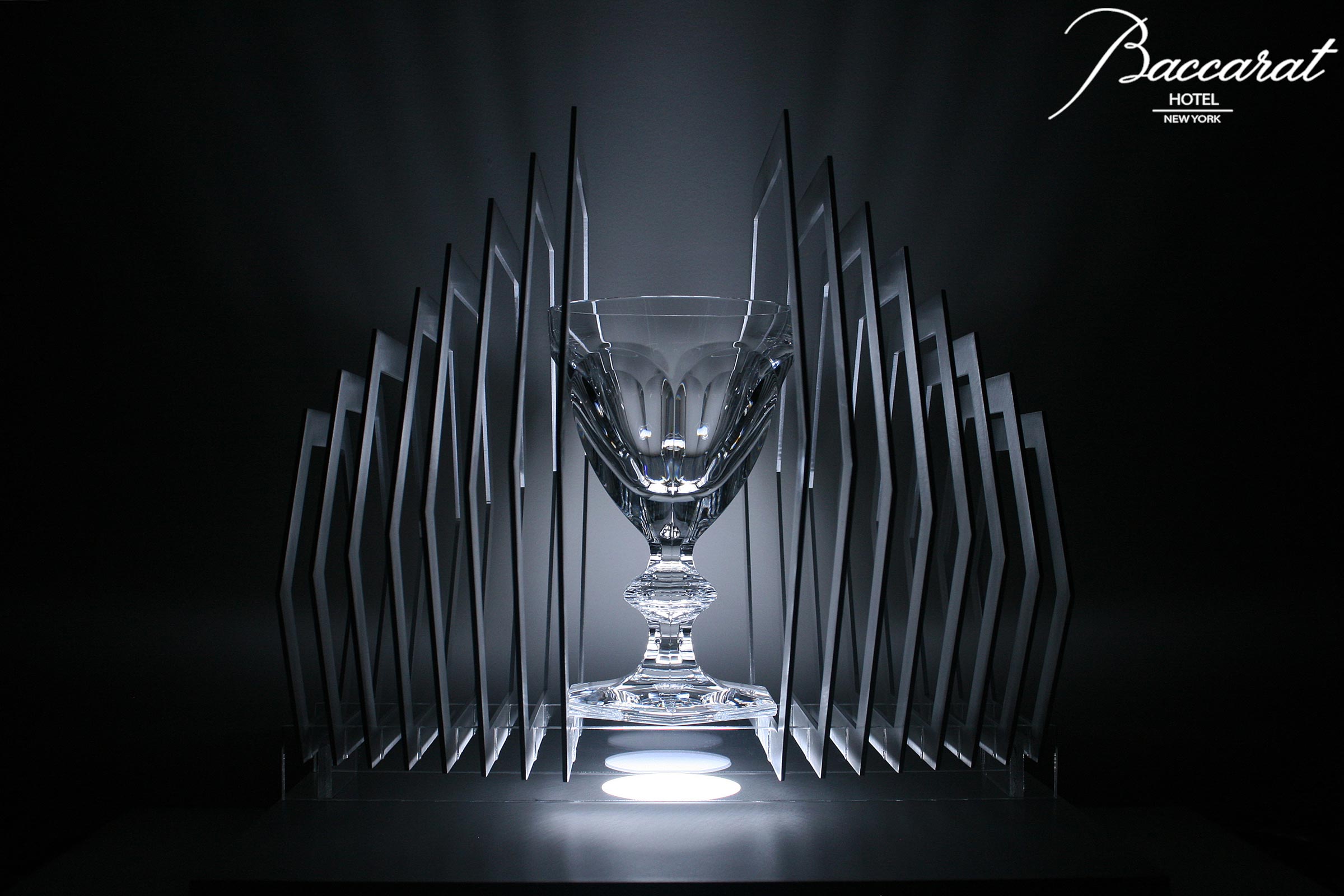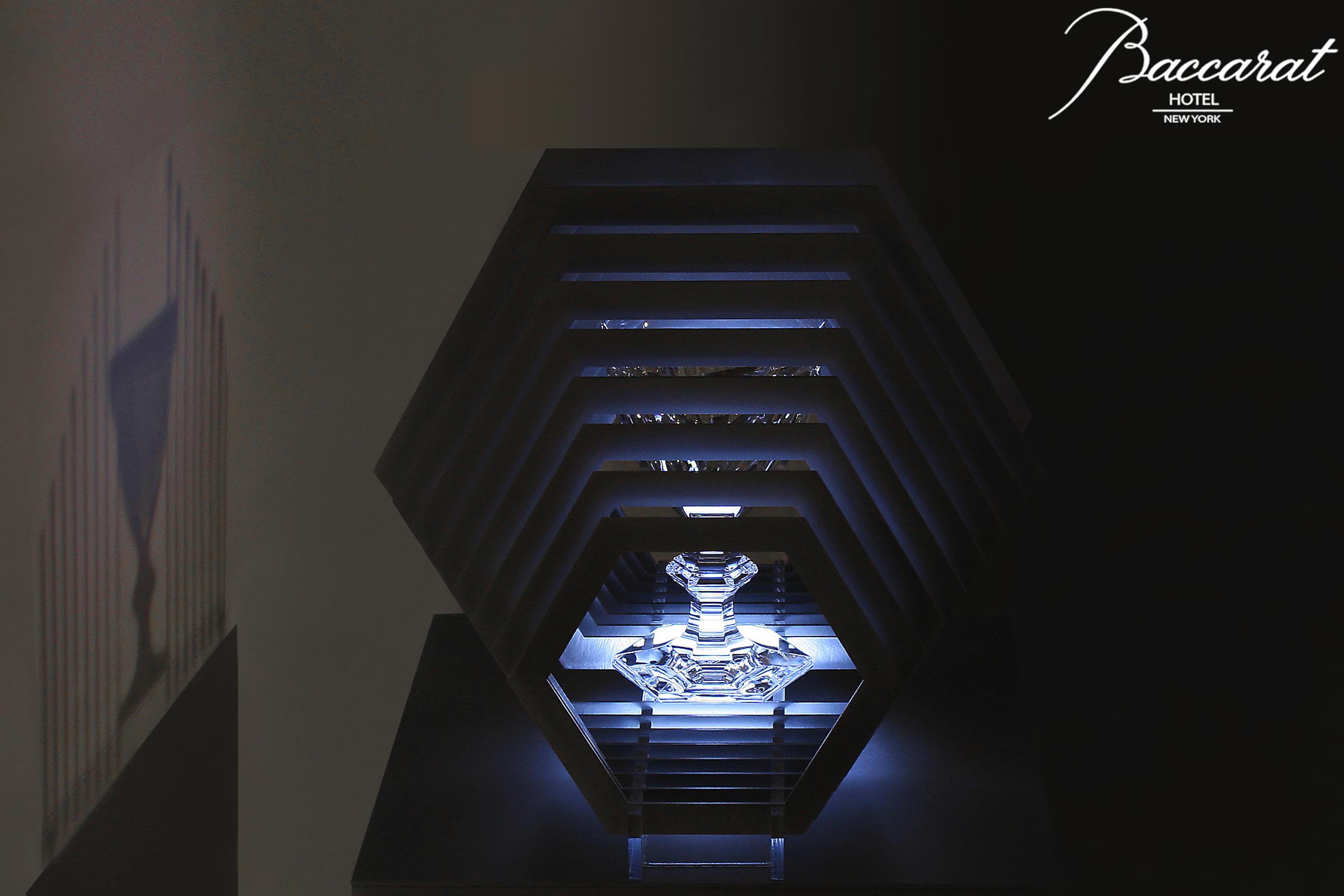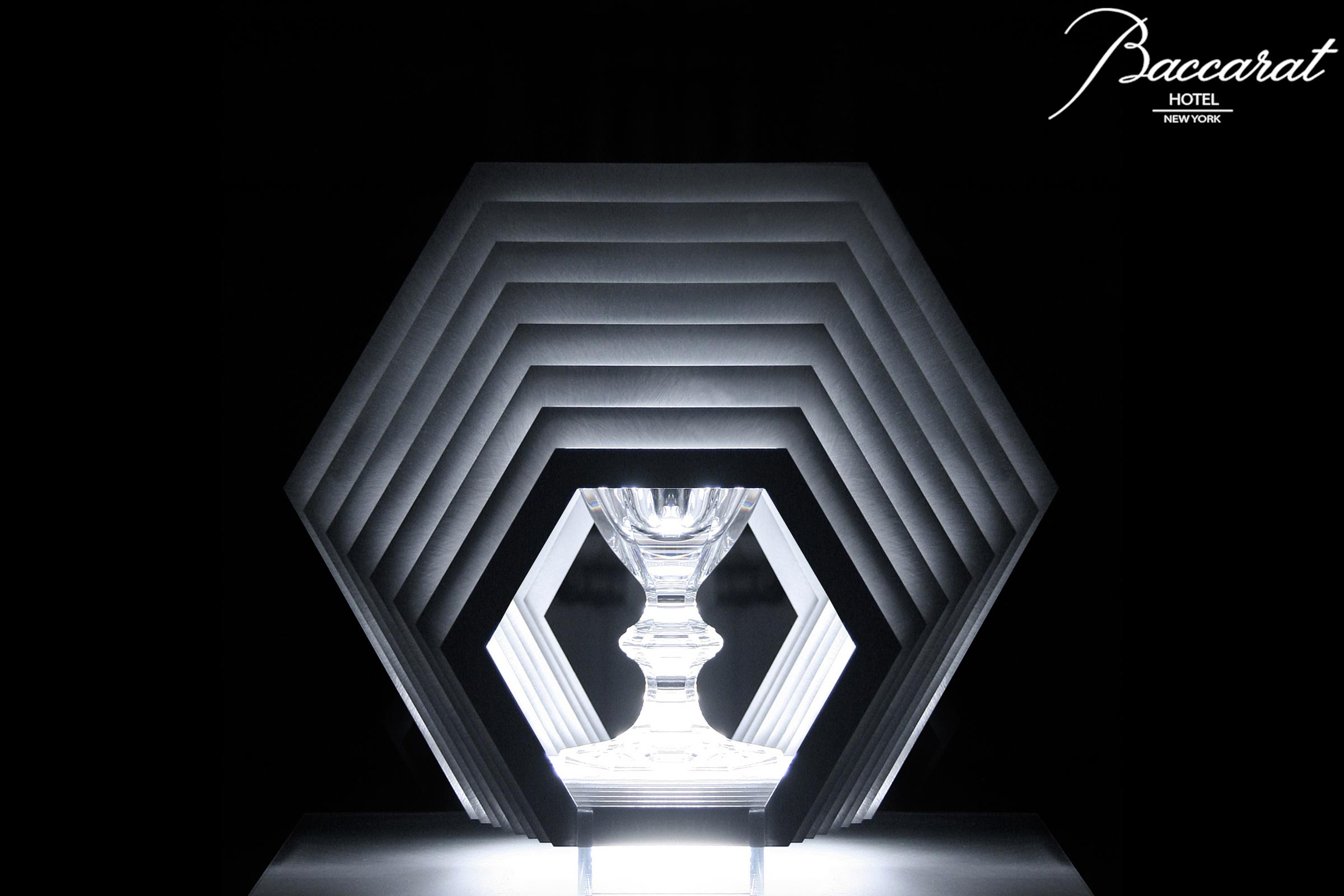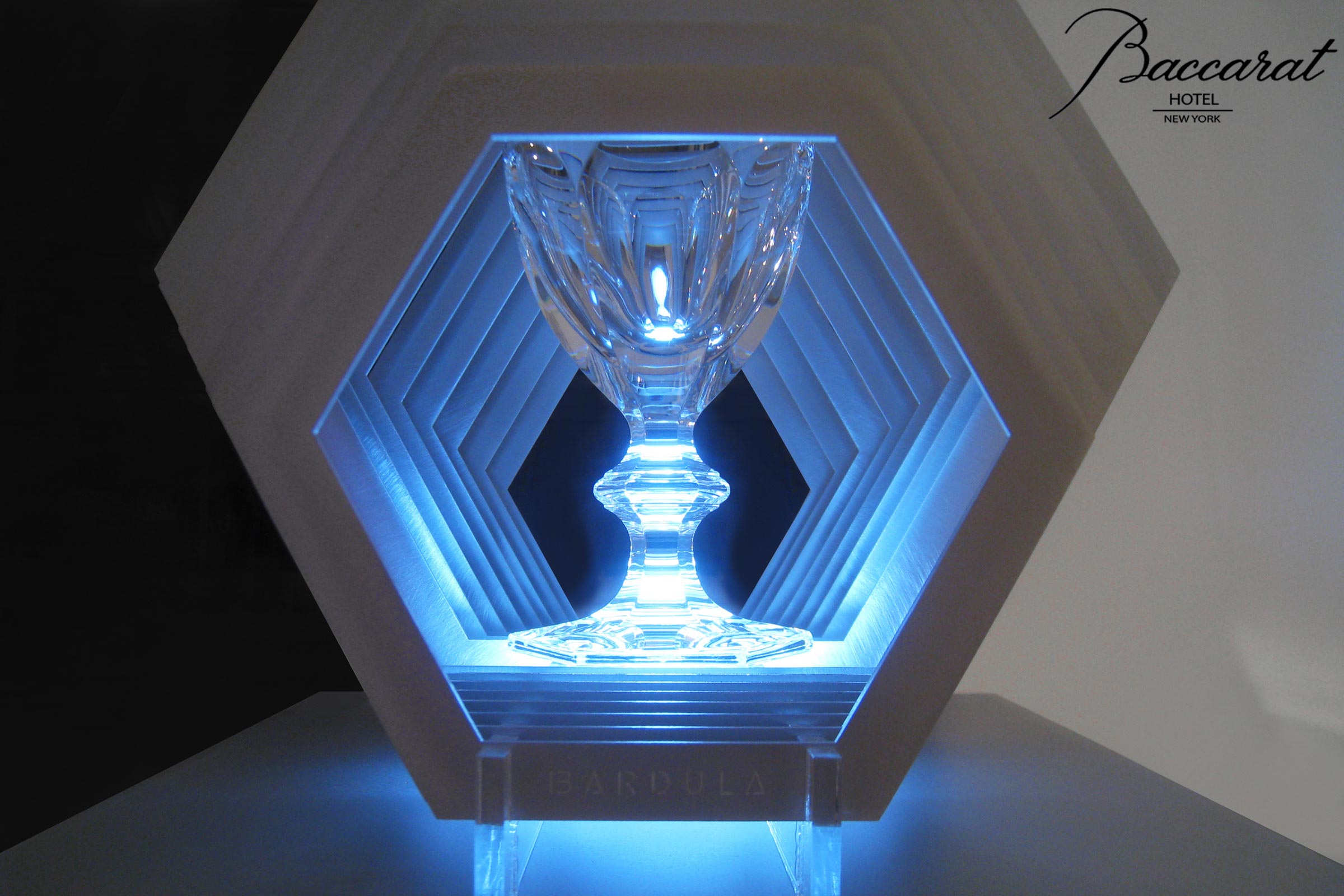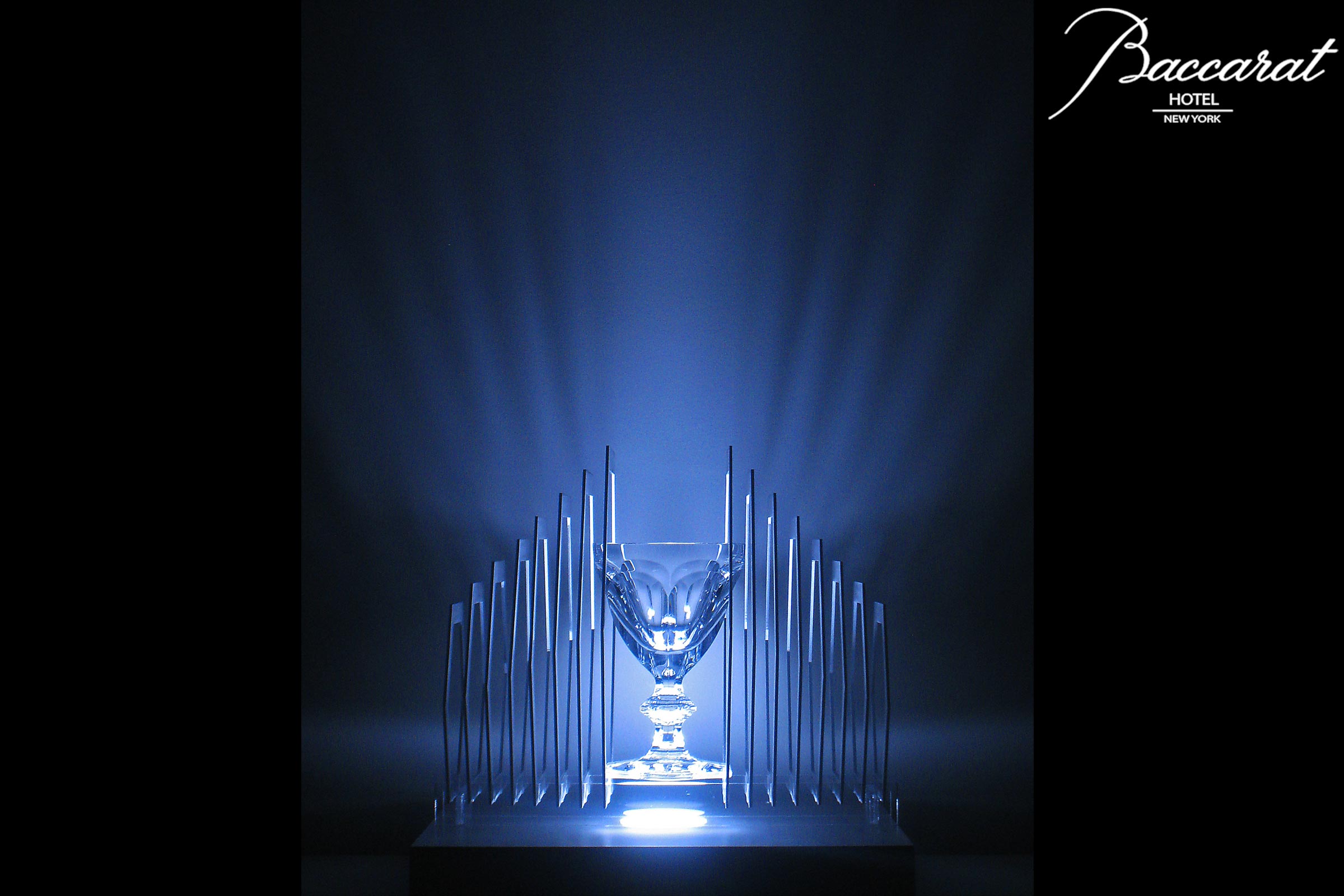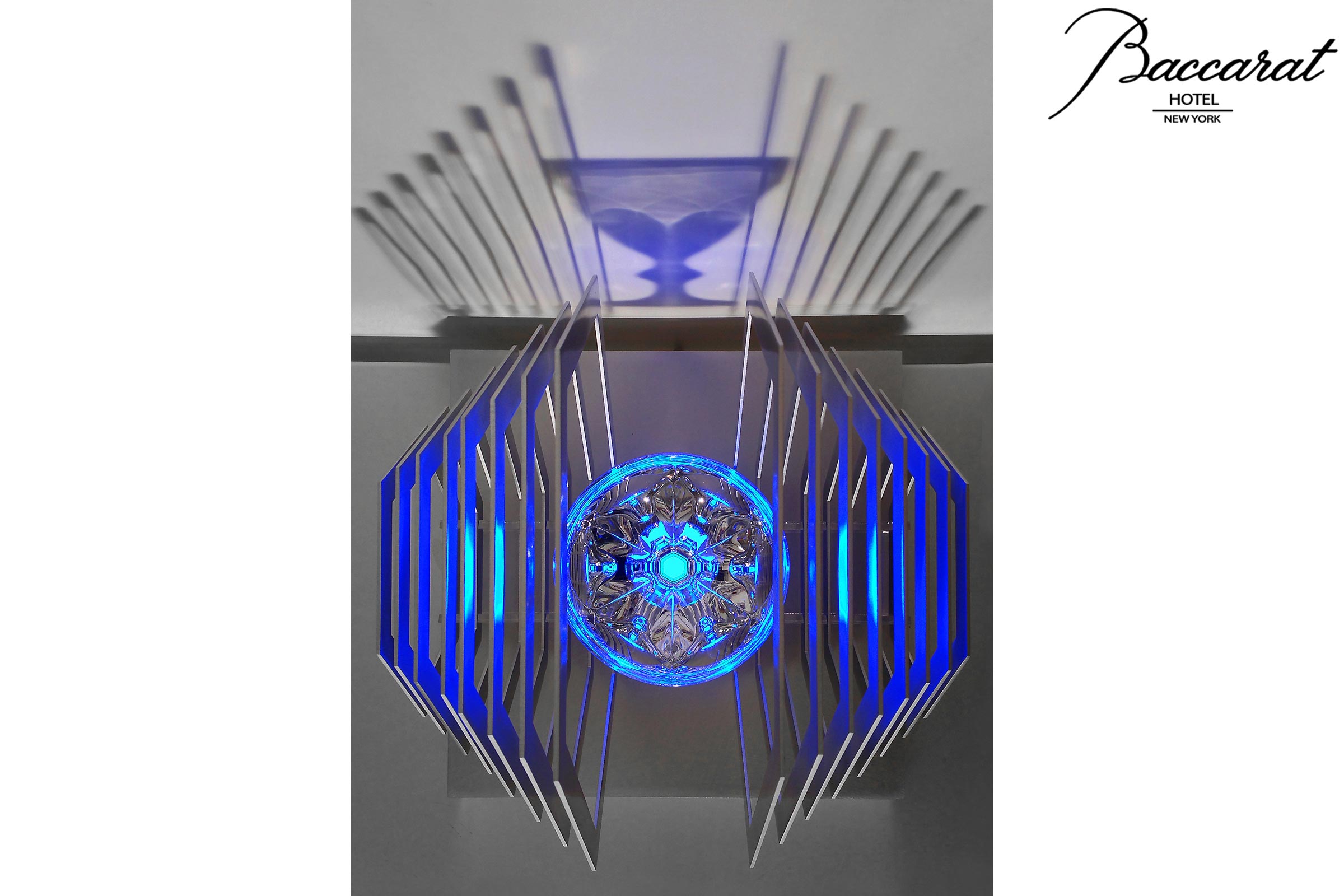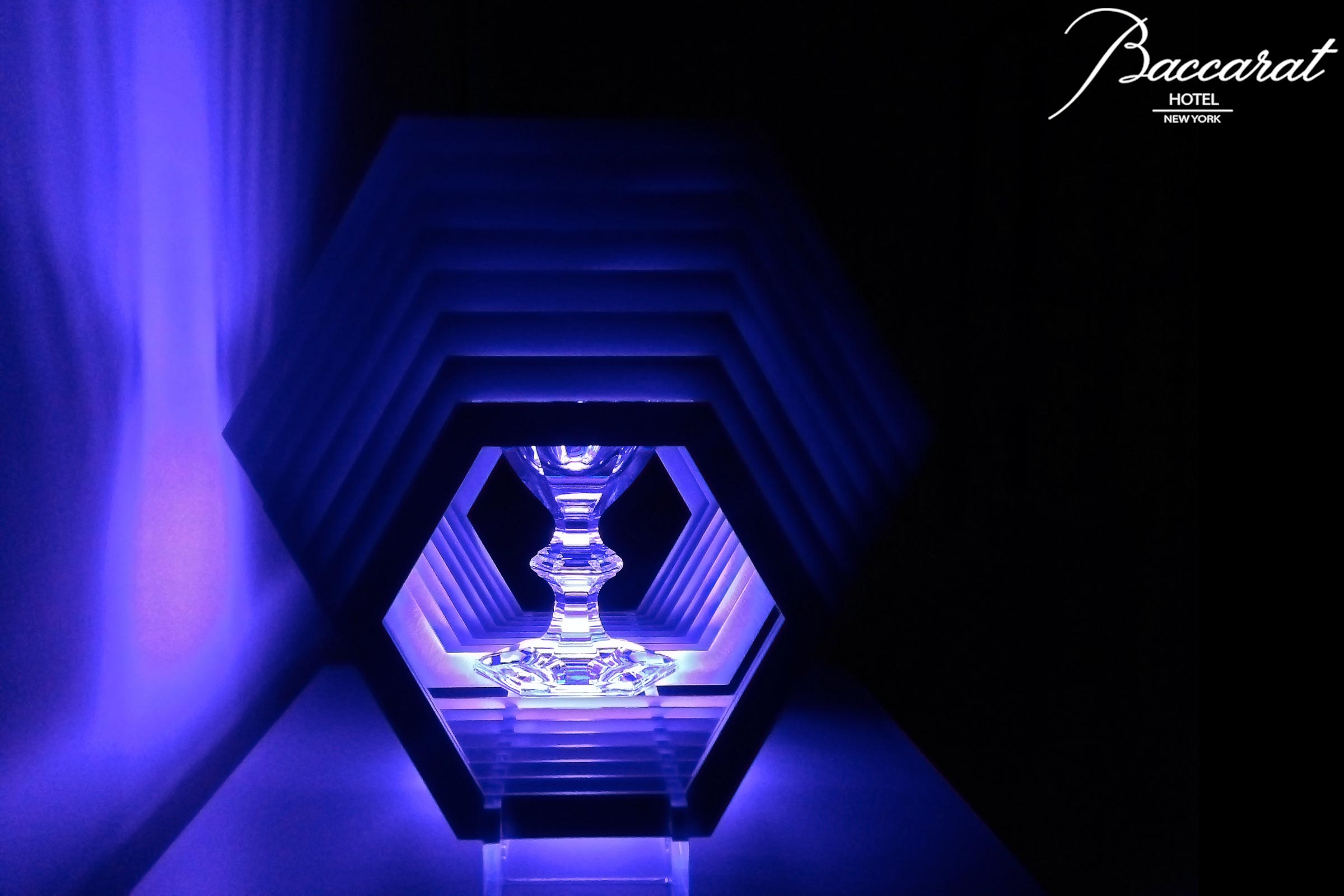III WATER : The Hexagon
The six-sided hexagon follows the square in the geometric sequence.
Of all the regular tessellating figures, the hexagon covers the largest surface area for a given perimeter. This means that it is a recurrent feature of our environment, whether natural or man-made. Certain mineral crystallisations naturally assume this geometric form, such as snowflake crystals which are formed into regular hexagons by their constituent water molecules.
Water is the third element and the sine qua non condition for life on earth.
The hexagon is also the symbol of France, the country where Baccarat was founded, and one where a long tradition of excellence in the fields of art and craftsmanship has yielded a brilliant cultural heritage.
Finally, the symbol of water mirrors the fundamental nature of a glass as the natural receptacle for the substance, and the outline of the installation, which echoes the Harcourt Glass’s hexagonal base and thus highlights the formal links between the two.
BACCARAT - WATER
